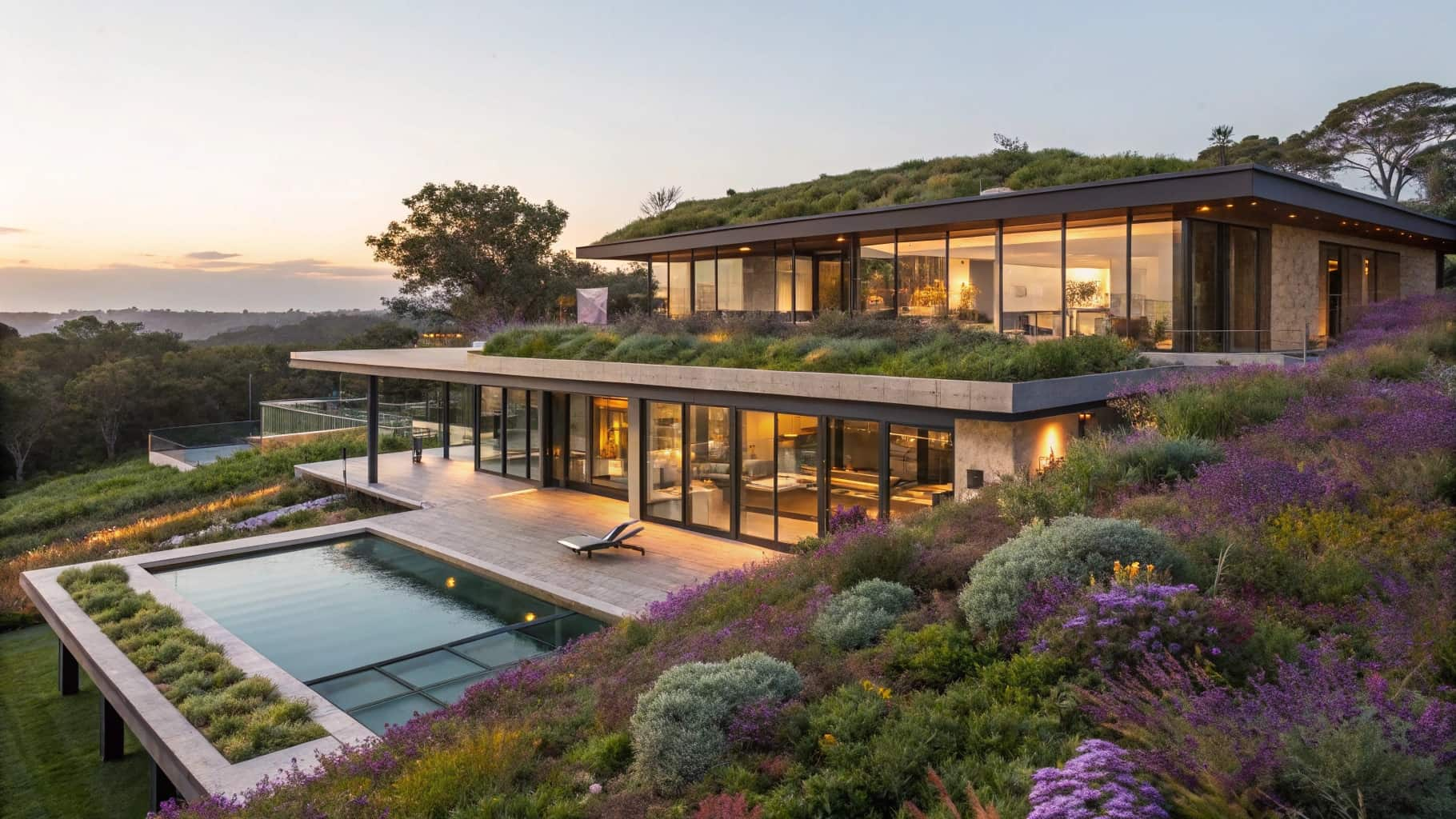Green roofs, often referred to as living roofs, are an innovative solution to urban environmental challenges. They consist of a layer of vegetation planted over a waterproof membrane, which not only enhances the aesthetic appeal of buildings but also provides significant ecological advantages. One of the most notable environmental benefits of green roofs is their ability to manage stormwater.
Traditional roofs can exacerbate urban flooding by channeling rainwater directly into drainage systems, leading to overwhelmed sewers and increased pollution in waterways. In contrast, green roofs absorb rainwater, reducing runoff and allowing for gradual release into the atmosphere through evapotranspiration. Studies have shown that green roofs can retain up to 80% of rainfall during summer months and 40% during winter, significantly mitigating the risk of urban flooding.
In addition to stormwater management, green roofs contribute to improved air quality. Urban areas are often plagued by high levels of air pollution due to vehicle emissions, industrial activities, and other anthropogenic sources. The vegetation on green roofs acts as a natural filter, absorbing carbon dioxide and releasing oxygen while trapping particulate matter and other pollutants.
This process not only enhances the air quality for city dwellers but also contributes to the reduction of greenhouse gases, playing a crucial role in combating climate change. Furthermore, the presence of plants on rooftops can help lower ambient temperatures in urban areas, contributing to a healthier environment overall.
The Aesthetic Appeal of Green Roofs
Green Roofs as Symbols of Sustainability
For instance, cities like Chicago and Toronto have embraced green roofs as part of their architectural identity, showcasing them as symbols of sustainability and innovation.
Rooftop Gardens: Spaces for Community and Leisure
Moreover, green roofs can serve as communal spaces that foster social interaction and community engagement. Rooftop gardens can be designed as recreational areas where residents can gather, relax, or even cultivate their own food.
Enhancing Quality of Life through Aesthetic Appeal
This not only promotes a sense of community but also encourages urban gardening practices that can lead to increased awareness about sustainable living. The aesthetic appeal of green roofs extends beyond mere visual pleasure; it creates environments that enhance the quality of life for urban residents by providing spaces for leisure and connection with nature.
The Energy-Saving Potential of Green Roofs
The energy-saving potential of green roofs is another compelling reason for their adoption in urban architecture. By providing an additional layer of insulation, green roofs can significantly reduce the energy required for heating and cooling buildings. During hot summer months, the vegetation and soil layer on a green roof help to keep indoor temperatures lower by absorbing sunlight and reducing heat absorption by the building structure.
This can lead to decreased reliance on air conditioning systems, resulting in lower energy bills and reduced greenhouse gas emissions. In colder months, green roofs can also provide insulation benefits by retaining heat within the building. The soil and plant layers act as a thermal barrier, minimizing heat loss through the roof.
Research indicates that buildings with green roofs can experience energy savings of up to 25% compared to traditional roofing systems. This energy efficiency not only benefits individual property owners but also contributes to broader efforts aimed at reducing urban energy consumption and promoting sustainable development practices.
The Urban Heat Island Effect and Green Roofs
The urban heat island (UHI) effect is a phenomenon where urban areas experience significantly higher temperatures than their rural surroundings due to human activities and infrastructure. This effect is primarily caused by the prevalence of concrete, asphalt, and other materials that absorb and retain heat. Green roofs offer a viable solution to mitigate UHI by introducing vegetation into the urban fabric.
The plants on green roofs provide shade and release moisture into the air through evapotranspiration, which helps cool the surrounding environment. Cities that have implemented extensive green roof programs have reported measurable reductions in surface temperatures. For example, New York City has seen a decrease in ambient temperatures in areas with a high concentration of green roofs.
This cooling effect not only improves comfort for residents but also reduces the demand for energy-intensive cooling systems during peak summer months. By addressing the UHI effect, green roofs contribute to creating more livable urban environments while simultaneously enhancing resilience against climate change impacts.
The Economic Advantages of Green Roofs
The economic advantages of green roofs extend beyond initial installation costs; they offer long-term financial benefits that can make them an attractive investment for property owners and municipalities alike. One significant economic benefit is the potential for increased property values. Buildings with green roofs are often perceived as more desirable due to their aesthetic appeal and environmental credentials, leading to higher market values compared to similar properties without such features.
This increase in property value can translate into higher tax revenues for municipalities. Additionally, green roofs can lead to substantial savings in stormwater management costs. By reducing runoff and minimizing the burden on drainage systems, municipalities can save on infrastructure maintenance and expansion costs associated with traditional stormwater management solutions.
Furthermore, energy savings from reduced heating and cooling costs can lead to significant financial returns over time. Studies have shown that the initial investment in a green roof can be recouped within a few years through these savings, making it a financially sound choice for both residential and commercial properties.
The Role of Green Roofs in Biodiversity Conservation
Green roofs play a crucial role in promoting biodiversity within urban environments, which are often characterized by habitat loss and fragmentation due to development pressures. By creating new habitats for various species, green roofs contribute to the conservation of urban biodiversity. They provide essential resources such as food and shelter for birds, insects, and other wildlife that may struggle to survive in heavily built-up areas.
For instance, studies have documented increased populations of pollinators like bees and butterflies on green roofs compared to traditional rooftops. Moreover, the design of green roofs can be tailored to support specific species or ecosystems, further enhancing their role in biodiversity conservation. By incorporating native plants that are well-adapted to local conditions, green roofs can create resilient ecosystems that support local wildlife while requiring less maintenance and water than non-native species.
This approach not only fosters biodiversity but also contributes to ecological resilience in urban areas, helping cities adapt to changing environmental conditions.
The Health and Wellness Benefits of Green Roofs
The health and wellness benefits associated with green roofs are increasingly recognized as vital components of urban living. Access to green spaces has been linked to improved mental health outcomes, reduced stress levels, and enhanced overall well-being. Green roofs provide an opportunity for city dwellers to connect with nature without leaving their urban environment.
The presence of greenery has been shown to promote relaxation and improve mood, making green roofs valuable assets for mental health. In addition to psychological benefits, green roofs can also contribute to physical health improvements by promoting active lifestyles. Rooftop gardens can serve as spaces for exercise or community gardening initiatives that encourage physical activity among residents.
Furthermore, the improved air quality associated with green roofs can lead to better respiratory health outcomes for urban populations who are often exposed to high levels of pollution. By integrating nature into urban architecture, green roofs create healthier living environments that support both mental and physical well-being.
The Future of Green Roofs in Sustainable Development
As cities continue to grapple with the challenges posed by rapid urbanization and climate change, the future of green roofs appears promising within the context of sustainable development. Increasingly, governments and organizations are recognizing the multifaceted benefits that green roofs offer in addressing environmental issues while enhancing urban livability. Policies promoting green infrastructure are being implemented in various cities worldwide, encouraging developers to incorporate green roofs into new construction projects.
Technological advancements are also paving the way for more efficient design and maintenance of green roofs. Innovations such as modular green roof systems allow for easier installation and scalability, making it feasible for a wider range of buildings to adopt this sustainable practice. Additionally, ongoing research into plant selection and soil composition is enhancing our understanding of how to optimize green roof performance in diverse climates.
As awareness grows regarding the importance of sustainable urban development, it is likely that green roofs will become an integral part of city planning strategies aimed at creating resilient communities. Their ability to provide environmental benefits while enhancing quality of life positions them as essential components in the pursuit of sustainable cities for future generations.
FAQs
What are green roofs?
Green roofs are roofs of buildings that are partially or completely covered with vegetation and a growing medium, planted over a waterproofing membrane.
Why are green roofs trending in modern estates?
Green roofs are trending in modern estates for several reasons. They provide insulation, reduce energy costs, improve air quality, manage stormwater, and create green space in urban areas. Additionally, they can increase the lifespan of a roof and add aesthetic value to a property.
What are the environmental benefits of green roofs?
Green roofs provide numerous environmental benefits, including reducing the urban heat island effect, capturing and filtering rainwater, reducing air pollution, and providing habitat for wildlife. They also contribute to the overall sustainability of a building or development.
What are the different types of green roofs?
There are several types of green roofs, including extensive green roofs, which are lightweight and low-maintenance, and intensive green roofs, which are more elaborate and can support a wider variety of plants and uses. Semi-intensive green roofs fall somewhere in between these two categories.
Are there any challenges associated with installing green roofs?
While green roofs offer many benefits, there are also challenges associated with their installation and maintenance. These can include structural considerations, weight load limits, waterproofing, and ongoing maintenance requirements. However, these challenges can often be addressed with proper planning and expertise.

